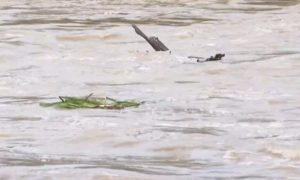ANTARCTICA: In the frigid waters of Antarctica, scientist Andrea Bonilla patiently awaits the emergence of two humpback whales, capturing their unique tail patterns in photographs to create a distinctive “fingerprint” for each individual. This meticulous process, part of a long-term study, aims to track the history and behavior of these majestic creatures.
Since 2014, Bonilla and her team at Cornell University have been cataloging humpback whales based on visual analyses of their flukes. By identifying 70 whales thus far, they hope to monitor any physical changes over time, shedding light on migratory patterns, population dynamics, and overall health.
The tail serves as a canvas of sorts, with each whale’s coloration and patterns acting as a unique identifier, akin to a human fingerprint. This method enables researchers to monitor individual whales and gain insights into their lives, from encounters with other species to potential health issues.
Despite a rebound in humpback populations following historic declines due to commercial whaling, these ocean giants face ongoing threats such as vessel strikes, pollution, and habitat degradation. Tail identification offers a valuable tool for conservation efforts, allowing scientists to track specific whales and advocate for the protection of critical habitats.
Recent studies underscore the importance of such initiatives, with research revealing significant population declines linked to environmental factors like marine heat waves. By meticulously analyzing tail photographs, scientists can better understand these trends and implement targeted conservation measures.
While the study of marine mammals commonly employs photo identification techniques, humpback whales stand out due to their distinct markings and propensity for tail displays while diving. Across diverse oceanic regions, these whales undertake epic migrations, relying on polar feeding grounds like Antarctica to replenish their energy reserves.
Through Bonilla’s work, detailed reproductions of humpback tail patterns provide valuable insights into their ecology, behavior, and overall well-being. As these magnificent creatures navigate increasingly challenging waters, the need for conservation measures grows ever more urgent, underscoring the vital role of scientific research in safeguarding our oceanic treasures.























